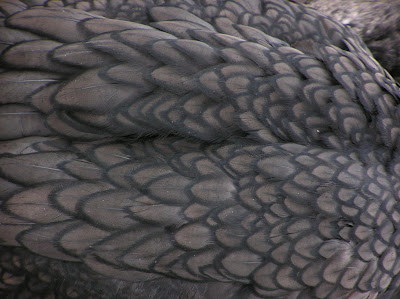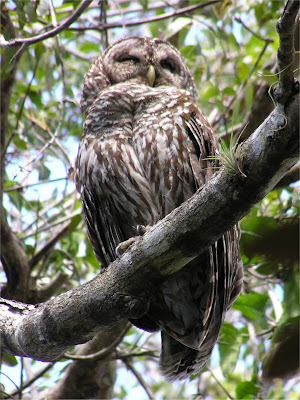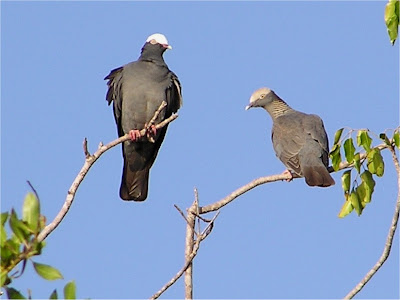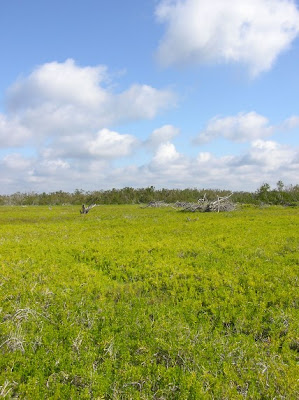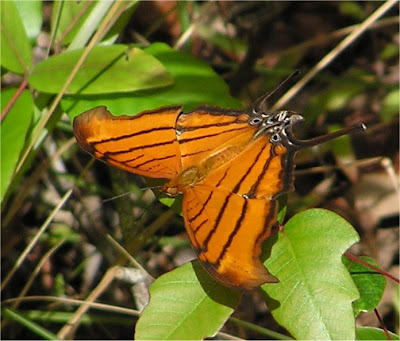There were many Herons and Egrets in the Everglades. They thrive on the fish in this broad, shallow river flowing across the flat landscape. I began to notice the details that can't be seen well when birds are a great distance, such as eye color and the small feathers on the head of the Great Blue Heron.

The Egrets can be hard to tell apart. Some look similar, and there are white versions of the Little Blue Heron and Great Blue Heron. This next photo is of a Snowy Egret. Though the golden yellow feet are the way most people identify them, the feet can often be under water. I decided to use the yellow on the face as my clue. The Snowy Egret catch fish in many interesting ways. In an earlier post I mentioned how they follow other birds, to catch fish that are fleeing. I also saw this bird stir and probe in the water with its foot to seek out fish. But the most interesting I saw was a tactic of hovering and moving slowly across the surface of the water, just trailing a toe along the water, fishing much like a flyfishing angler carefully places a dry fly on the surface in just the right spot to cause a fish to rise to take the bait.

The Cattle Egret is much like the Snowy, but it feeds on land, often wandering in agricultural fields. Here it has caught a grasshopper to eat.

The Black-crowned Night-Heron can be found in Idaho, but they are so wary in my home state that I have never taken a good photo. They were abundant on the Anhinga Trail in the Everglades, and perhaps the constant flow of people on the boardwalk had made them grow accustomed to the activity.

The Yellow-crowned Night-Heron was a bird I had never seen before, so I was thrilled to hear somebody say its name as I walked the Anhinga Trail. I met many birders and shared what I had seen, and learned what they had seen. Even a simple, "I saw a Yellow-breasted Chat in this area yesterday morning." would make me look and listen the next morning ... and sure enough, there it was. So, I first saw the Yell0w-crowned Night-Heron because someone else found it and pointed it out. Later I found this one on another trail, the Shark River Slough, on the north side of the park.












